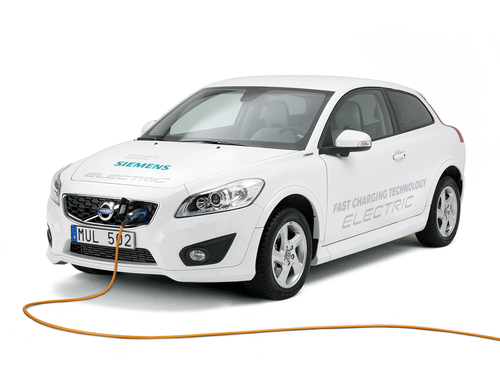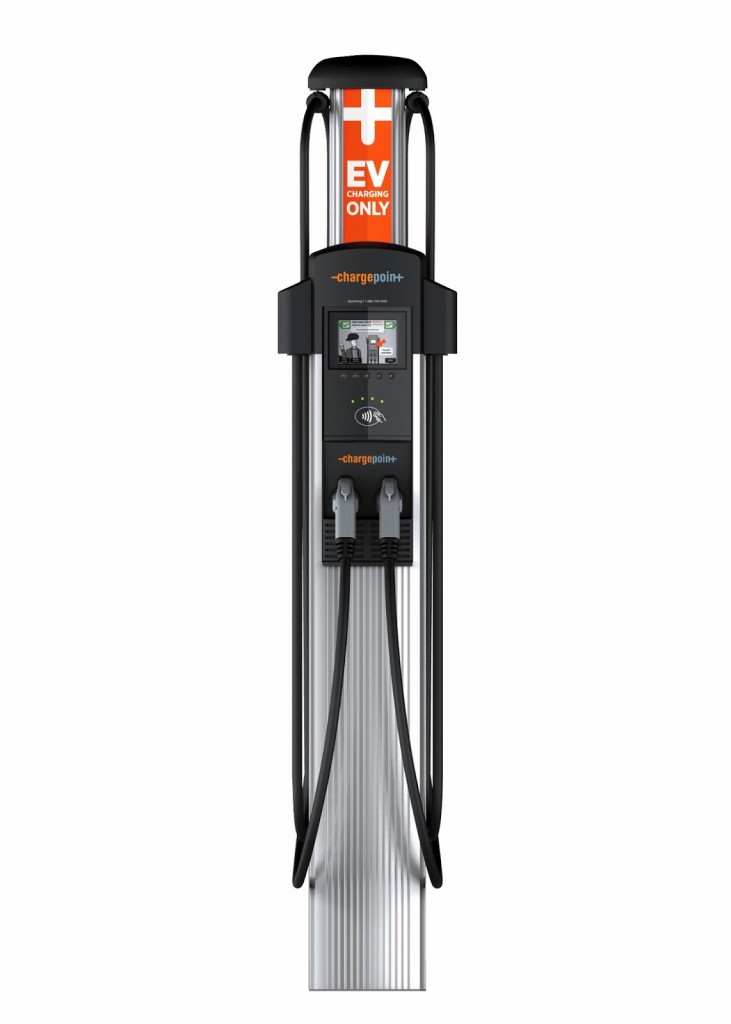California’s electric vehicle charging infrastructure may get a huge shot in the arm starting in 2015-16. The California Building Code (CBC2016) appears set to require electric vehicle charging infrastructure in newly constructed parking lots, or housing. I say “appears” because the information is coming from draft building code documents![]() , full of legalese. The new building code requirements don’t specify charging station installation, just the conduit and electrical system calculations required to prepare for charging stations.
, full of legalese. The new building code requirements don’t specify charging station installation, just the conduit and electrical system calculations required to prepare for charging stations.
This removes impediments to charging station installation. Currently any EVSE installation might require trenching to run new conduit to carry electrical wiring, plus upgrades to the service panel so it can supply enough power to run the charging stations. If needed, they are very expensive additions to a charging station installation.
The new building code requirements will ensure the conduit and service panel capacity is already there. With that in place, it will more-or-less just be a matter of running wires and bolting charging stations into place.
The cost of complying is minimal. An estimate in one document linked below says the conduit and related hardware will cost $50, while circumventing a huge extra expense when future residents choose to install charging stations.
A slide deck from the California Building Standards Commission![]() goes over upcoming updates to the Building Code. These updates cover a whole gamut of things, including electric vehicle service equipment (EVSE) support.
goes over upcoming updates to the Building Code. These updates cover a whole gamut of things, including electric vehicle service equipment (EVSE) support.
In Division 5.1 of the building code (Site Development), new sections will be added to the code covering two scenarios: Single vehicle charging requirements, and multiple vehicle charging requirements.
The multiple vehicle scenario is parking lots with over 100 parking spaces. They’ll be required to have EVSE conduit and service panel capacity to cover 3% of the parking spaces.
A September 2014 report to the California Legislature, by the Department of Housing and Community Development![]() , has an excellent summary of the new requirements.
, has an excellent summary of the new requirements.
Building code section 4.106.4.1 covers EV charging infrastructure in new one- and two-family dwellings, as well as townhouses with attached private garages. The requirement is service panel capacity for a 40 amp circuit (good for a 32 amp charging station), and conduit that can support wiring for an 80 amp circuit.
Another section requires that the service panel be labeled as “EV Capable.”
Building code section 4.106.4.2 covers multi-family dwellings. It applies to any development with 17 or more units. It requires conduit and service panel capacity for 3% of the parking spaces.
The document recognizes charging station capabilities are rapidly evolving, and that multi-port charging stations (like the ChargePoint CT-4000 series) can accommodate more charging stations than the service panel capacity. Instead of mandating there be one 40 amp circuit for each charging space, the code gives leeway to allow for fewer 40 amp circuits than the number of charging cords. In such a case the charging station equipment will have to share the power out among the charging cords.
To prepare for these building code changes, the Dept of Housing and Community Development prepared an Electric Vehicle Readiness Study![]() . This paper has an excellent amount of detail and information. Most importantly, it has regular writing in it rather than legalese.
. This paper has an excellent amount of detail and information. Most importantly, it has regular writing in it rather than legalese.
A key point in that document is a CALISO (the electrical grid operator) opinion that the grid has sufficient capacity so long as charging ports are limited to 240 volts 40 amps. They claim that if (when) electric cars with 80 amp charging capacity become common, the grid might be overloaded.
That’s one of the big questions about electric vehicles – when (or if) the electrical grid will be overloaded by the cars. The electrical utilities have always stated two areas of concern: a) capacity at the neighborhood level – whether the transformer on the utility pole can handle the load; b) overall grid capacity in peak load conditions.
The scenario of an 80 amp charging circuit, versus 40 amp, impacts transformer capacity at the local level. The more powerful the charging circuits, the more quickly will local transformers run out of capacity.
That the building code requirements mandate 40 amp circuits seems to me short-sighted. The resulting 32 amp charging rate is pretty slow, especially with the 200 mile range cars that are supposedly coming on the market in 2017ish. Those cars will have 60+ kilowatt-hour packs, and the charging time at 32 amps (6 kilowatts) is going to be 10 hours or more. Nobody’s going to like that.
On the other hand, yes, 80 amp circuits do make it more likely transformers will have to be upgraded. Who will pay for that additional cost?
At the other end of the scale, what about the lowly 120 volt outlet? Lots of people are happily charging their cars overnight at 120 volts, and with 5 miles per hour of charging their car gains 50 or more miles of range overnight. Surely that’s enough for most commutes, and stretches service panel capacity. While the Readiness Study recommended 120 volt outlet installation, the building code requirements make no mention of this possibility. Therefore I’m assuming the building code requirement cannot be satisfied with 120 volt outlets.
Another key fact in the study is a projection that by 2025 we’ll need over 1 million charging stations in California in single- and multi-family dwellings.
This is a huge step forward for electric vehicles in California.
These low-cost requirements pave the way for a big increase in the capacity for electric vehicle owners to charge their electric cars or electric motorcycles at home.
Making the requirements apply to multi-family dwellings is a massive improvement over the current situation. Today apartment, condo and townhouse dwellers are largely out of luck in charging their cars at home. Building managers routinely don’t allow them to do so, and the cost of charging station installation is prohibitive.
- Highway design could decrease death and injury risk, if “we” chose smarter designs - March 28, 2015
- GM really did trademark “range anxiety”, only later to abandon that mark - March 25, 2015
- US Government releases new regulations on hydraulic fracturing, that some call “toothless” - March 20, 2015
- Tesla Motors magic pill to solve range anxiety doesn’t quite instill range confidence - March 19, 2015
- Update on Galena IL oil train – 21 cars involved, which were the supposedly safer CP1232 design - March 7, 2015
- Another oil bomb train – why are they shipping crude oil by train? – Symptoms of fossil fuel addiction - March 6, 2015
- Chevron relinquishes fracking in Romania, as part of broader pull-out from Eastern European fracking operations - February 22, 2015
- Answer anti- electric car articles with truth and pride – truth outshines all distortions - February 19, 2015
- Apple taking big risk on developing a car? Please, Apple, don’t go there! - February 16, 2015
- Toyota, Nissan, Honda working on Japanese fuel cell infrastructure for Japanese government - February 12, 2015























Pingback: Solar carports at apartment complexes to allow EV charging at multi-unit-dwellings | The Long Tail Pipe